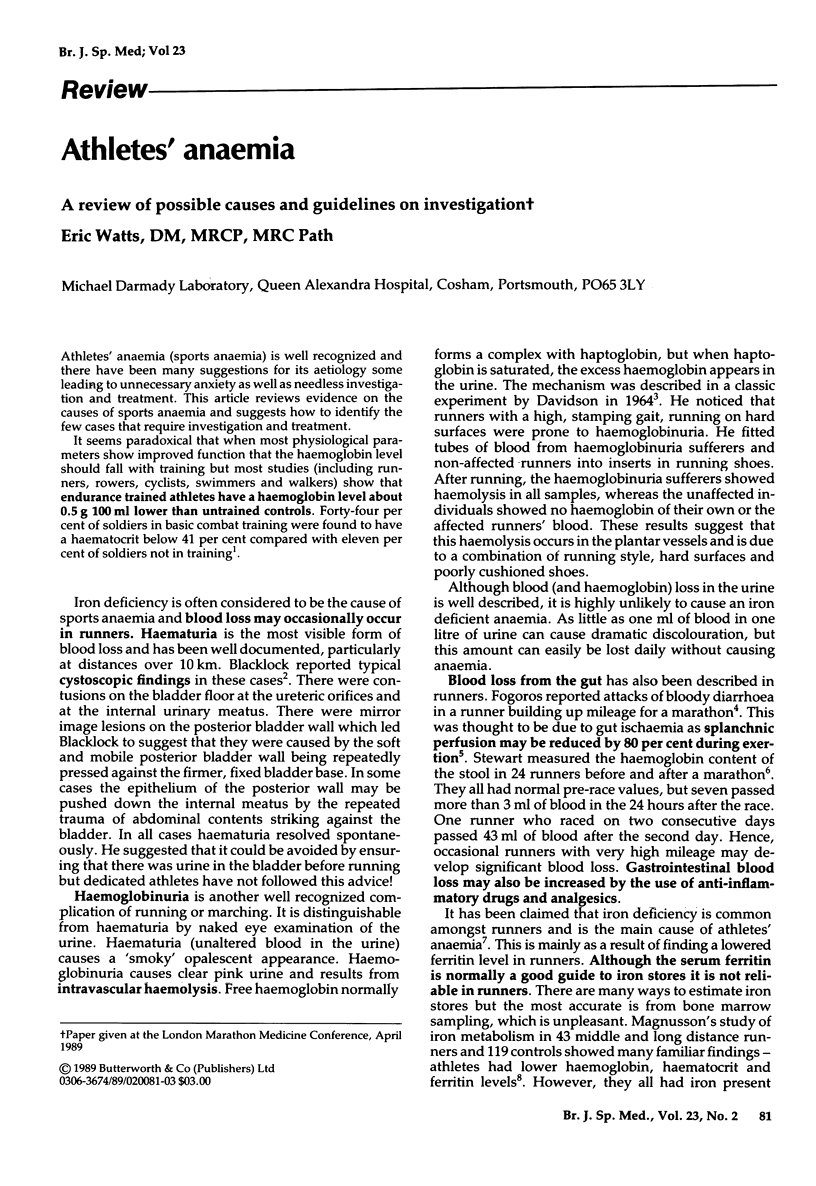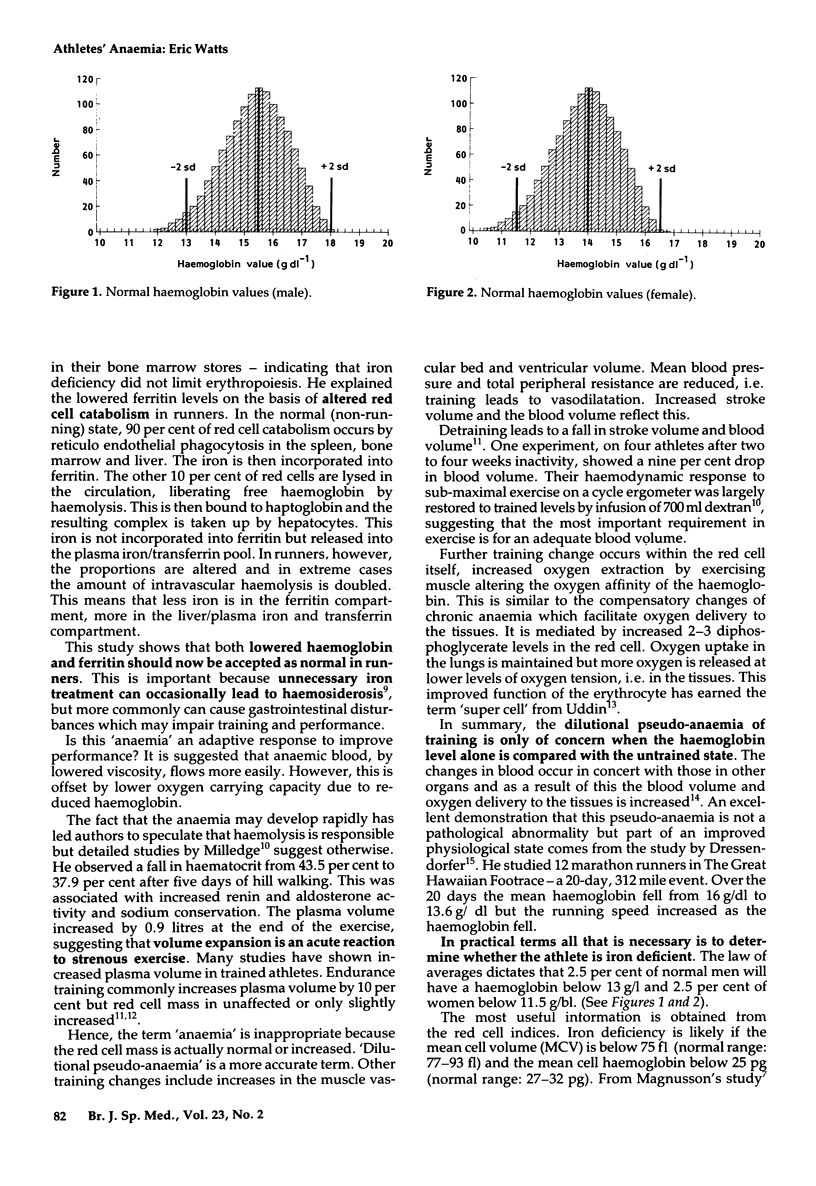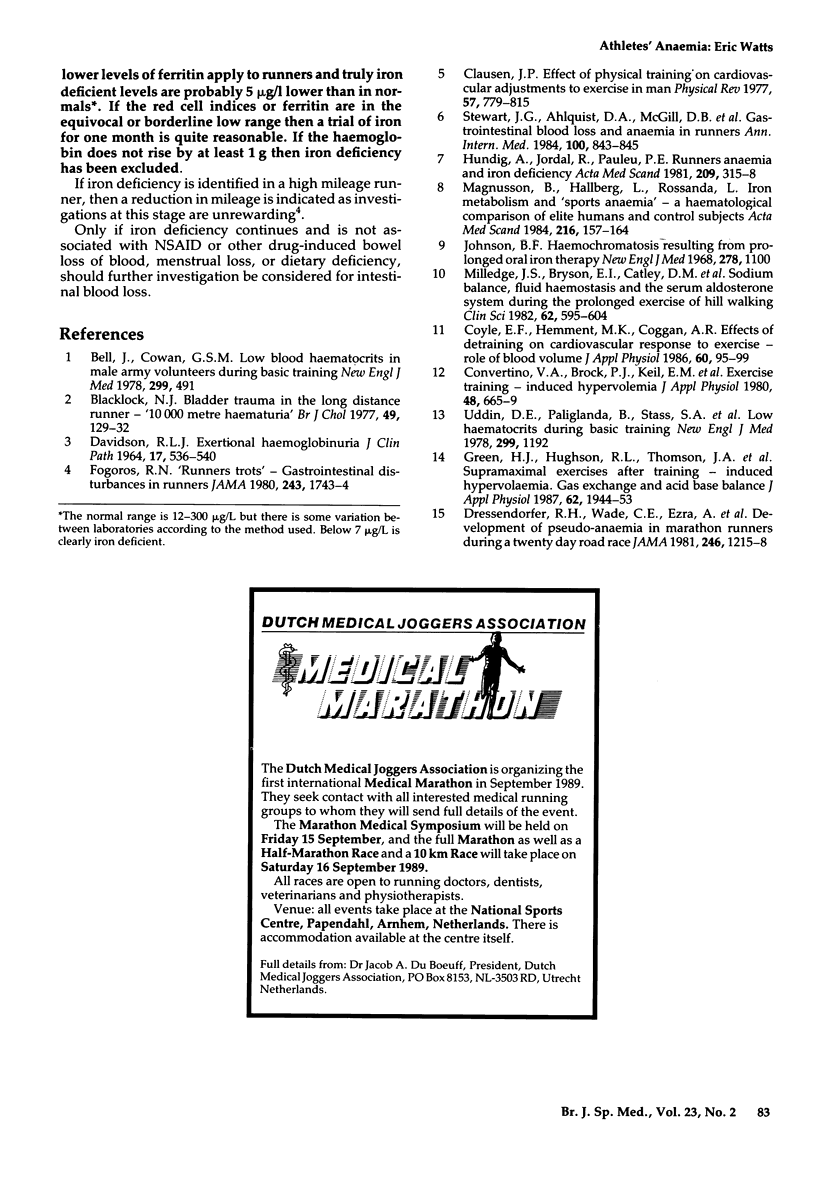Full text
PDF


Selected References
These references are in PubMed. This may not be the complete list of references from this article.
- Bell J., Cowan G. S., Jr Low blood hematocrits in male Army volunteers during basic training. N Engl J Med. 1978 Aug 31;299(9):491–491. doi: 10.1056/NEJM197808312990925. [DOI] [PubMed] [Google Scholar]
- Blacklock N. J. Bladder trauma in the long-distance runner: "10,000 metres haematuria". Br J Urol. 1977 Apr;49(2):129–132. doi: 10.1111/j.1464-410x.1977.tb04084.x. [DOI] [PubMed] [Google Scholar]
- Clausen J. P. Effect of physical training on cardiovascular adjustments to exercise in man. Physiol Rev. 1977 Oct;57(4):779–815. doi: 10.1152/physrev.1977.57.4.779. [DOI] [PubMed] [Google Scholar]
- Convertino V. A., Brock P. J., Keil L. C., Bernauer E. M., Greenleaf J. E. Exercise training-induced hypervolemia: role of plasma albumin, renin, and vasopressin. J Appl Physiol Respir Environ Exerc Physiol. 1980 Apr;48(4):665–669. doi: 10.1152/jappl.1980.48.4.665. [DOI] [PubMed] [Google Scholar]
- Coyle E. F., Hemmert M. K., Coggan A. R. Effects of detraining on cardiovascular responses to exercise: role of blood volume. J Appl Physiol (1985) 1986 Jan;60(1):95–99. doi: 10.1152/jappl.1986.60.1.95. [DOI] [PubMed] [Google Scholar]
- DAVIDSON R. J. EXERTIONAL HAEMOGLOBINURIA: A REPORT ON THREE CASES WITH STUDIES ON THE HAEMOLYTIC MECHANISM. J Clin Pathol. 1964 Sep;17:536–540. doi: 10.1136/jcp.17.5.536. [DOI] [PMC free article] [PubMed] [Google Scholar]
- Dressendorfer R. H., Wade C. E., Amsterdam E. A. Development of of pseudoanemia in marathon runners during a 20-day road race. JAMA. 1981 Sep 11;246(11):1215–1218. [PubMed] [Google Scholar]
- Fogoros R. N. 'Runner's trots'. Gastrointestinal disturbances in runners. JAMA. 1980 May 2;243(17):1743–1744. doi: 10.1001/jama.243.17.1743. [DOI] [PubMed] [Google Scholar]
- Green H. J., Hughson R. L., Thomson J. A., Sharratt M. T. Supramaximal exercise after training-induced hypervolemia. I. Gas exchange and acid-base balance. J Appl Physiol (1985) 1987 May;62(5):1944–1953. doi: 10.1152/jappl.1987.62.5.1944. [DOI] [PubMed] [Google Scholar]
- Johnson B. F. Hemochromatosis resulting from prolonged oral iron therapy. N Engl J Med. 1968 May 16;278(20):1100–1101. doi: 10.1056/NEJM196805162782006. [DOI] [PubMed] [Google Scholar]
- Magnusson B., Hallberg L., Rossander L., Swolin B. Iron metabolism and "sports anemia". II. A hematological comparison of elite runners and control subjects. Acta Med Scand. 1984;216(2):157–164. [PubMed] [Google Scholar]
- Milledge J. S., Bryson E. I., Catley D. M., Hesp R., Luff N., Minty B. D., Older M. W., Payne N. N., Ward M. P., Withey W. R. Sodium balance, fluid homeostasis and the renin-aldosterone system during the prolonged exercise of hill walking. Clin Sci (Lond) 1982 Jun;62(6):595–604. doi: 10.1042/cs0620595. [DOI] [PubMed] [Google Scholar]
- Stewart J. G., Ahlquist D. A., McGill D. B., Ilstrup D. M., Schwartz S., Owen R. A. Gastrointestinal blood loss and anemia in runners. Ann Intern Med. 1984 Jun;100(6):843–845. doi: 10.7326/0003-4819-100-6-843. [DOI] [PubMed] [Google Scholar]


